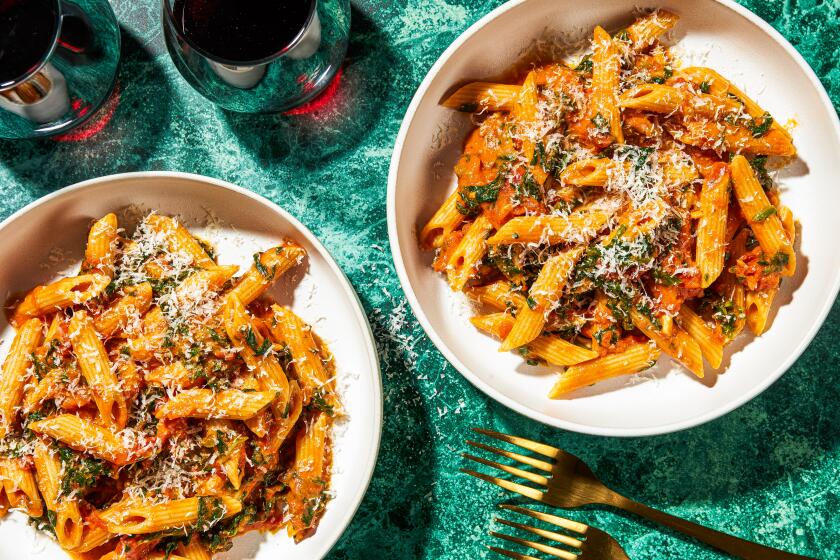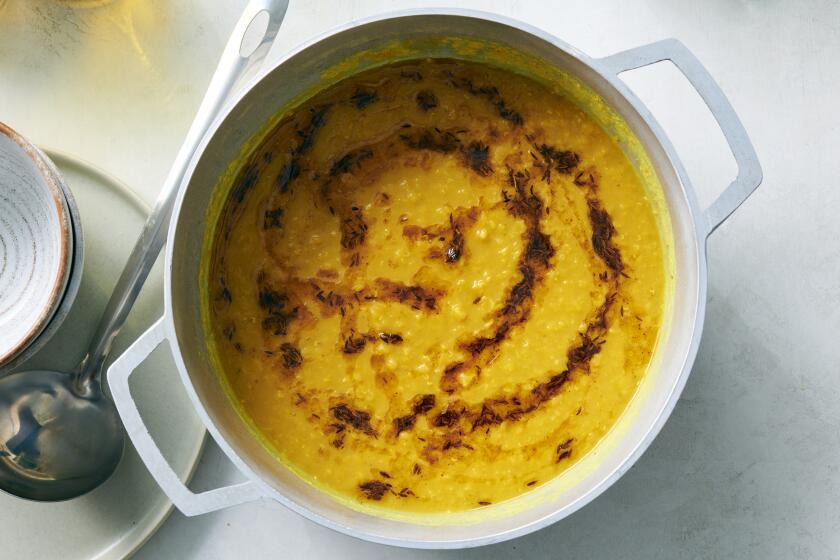Fish tacos: The lore of a ‘San Diego’ signature dish
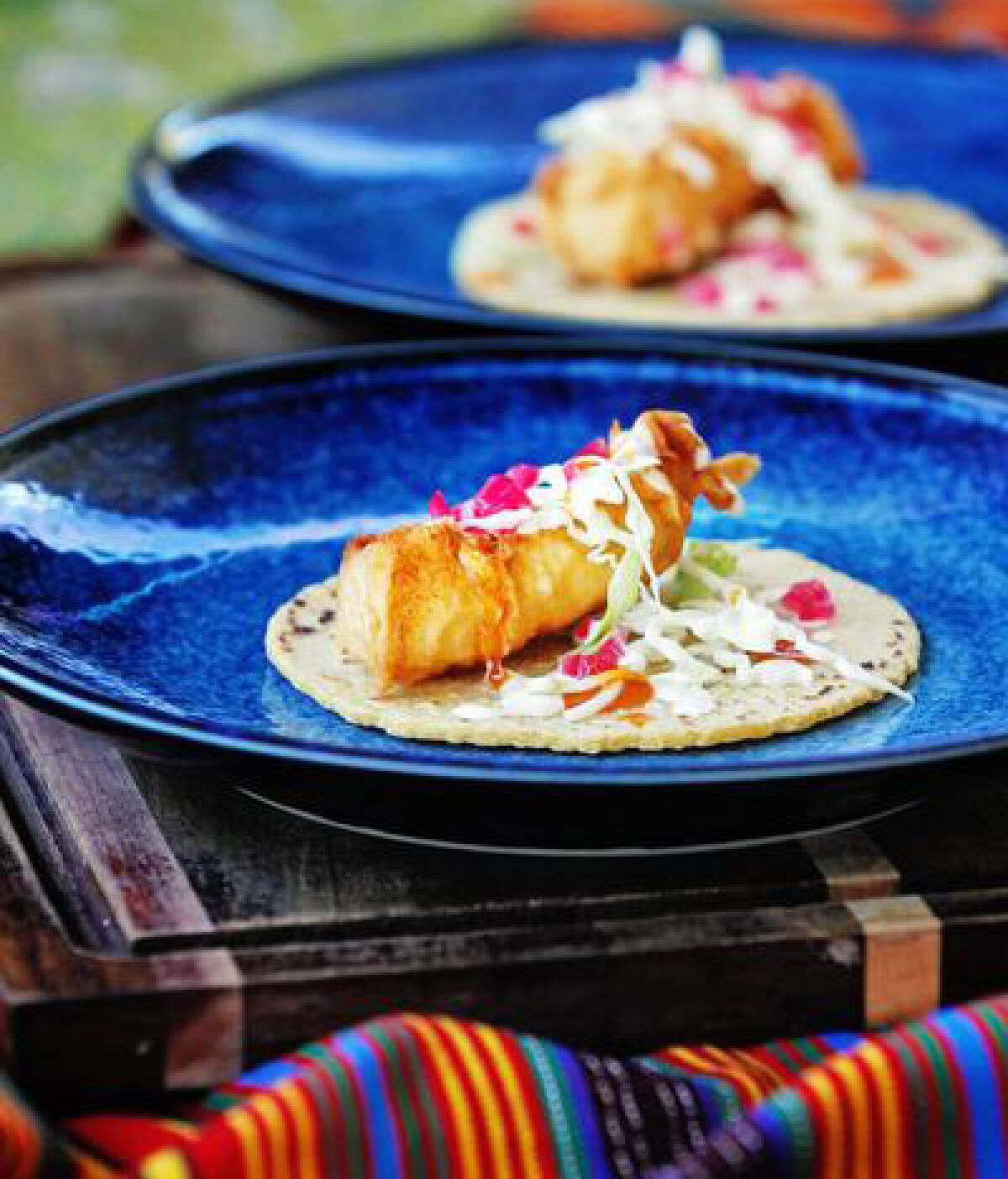
Craveworthy fried favorite made famous by Rubio’s likely has much older origin
Ask a local to identify San Diego’s signature dish, and some will say carne asada fries. Others go with carne asada burritos. Many, though, swear by the mashup of the two that is the California burrito. But nationwide, it’s fish tacos that most would expect to see on a San Diego Tourism Authority billboard. There are two words to explain that: Ralph Rubio.
While fish tacos didn’t originate here, there’s no doubt they were popularized on this side of the U.S.-Mexico border by the chain now known as Rubio’s Coastal Grill. Ralph Rubio has told the chain’s origin story so many times, he can’t even estimate the number. He and some friends from San Diego State were on a 1974 spring break trip to San Felipe, Baja California, when Rubio discovered fried fish tacos at a local stand and wondered why he couldn’t get them in San Diego. The question turned into an idea, the idea turned into a restaurant and the restaurant turned into a chain.

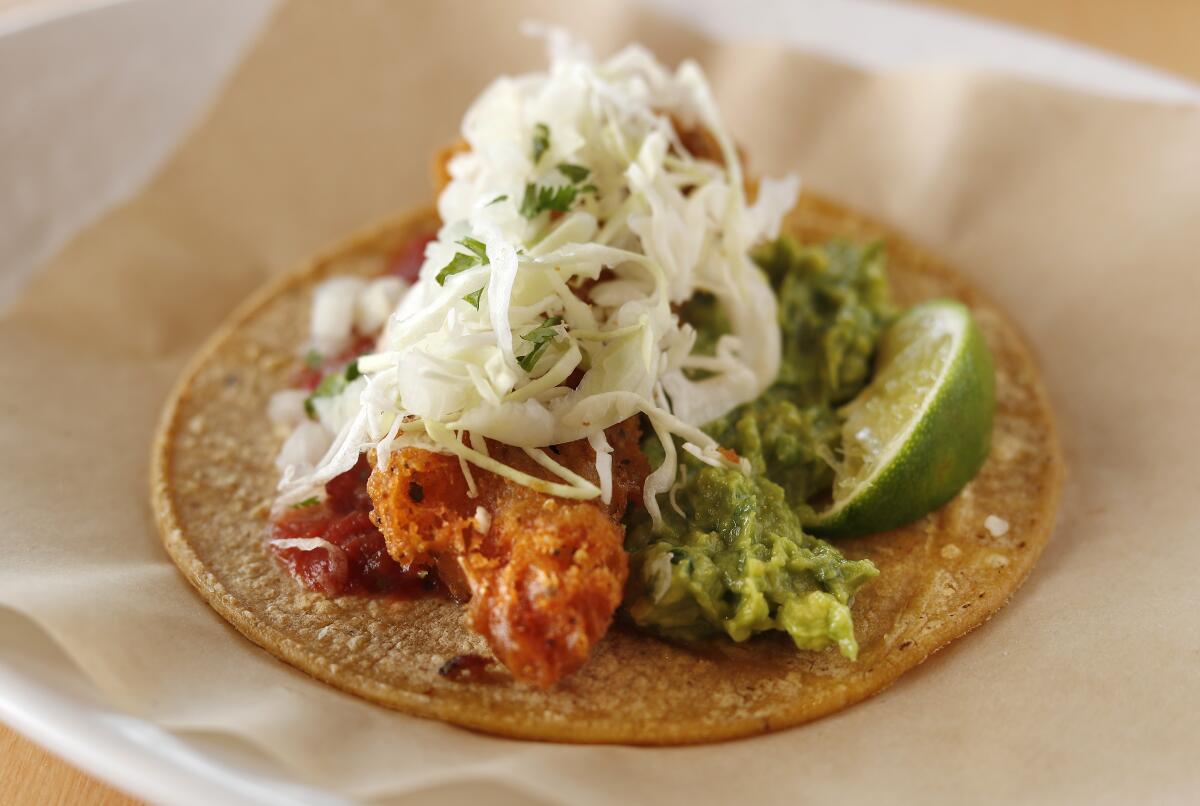
There are several fish taco origin stories revolving around Japanese fishermen. Rubio says the San Felipe taqueros told him Japanese fishermen made it up the Sea of Cortez. The most common story, though, is set in 1920s Ensenada. The Japanese fished off the fertile Northern Baja coast where, even today, tuna is farmed for the Japanese market. When the boats tied up, though, local food vendors tried (mostly unsuccessfully) to sell to those fishermen. One got the idea of frying fish in the batter the Japanese used for their tempura. That and a tortilla, and those fishermen would have been eating pretty much the same tacos handed to every fish taco customer today. It’s a story so nice and neat, it might as well be wrapped in a bow.
A somewhat more likely origin story is that Tipai-Ipai Indigenous people, also known as the Kumeyaay, who were fishing off the Baja coast chopped up their catch, cooked and ate it in a tortilla. “It’s hard to imagine that didn’t happen,” said Rubio. As Matthew Jaffe wrote in Sunset Magazine years ago, “people have been eating fish tacos in the coastal areas of Mexico for ... thousands of years [since] indigenous North American peoples first wrapped the plentiful offshore catch into stone-ground-corn tortillas.”
Renowned fishmonger (and third generation fisherman) Tommy Gomes told the Union-Tribune he regularly found something similar fishing off Baja in the 1970s. When a Pacific storm came in, their commercial vessel would tie up, with the crew taking shelter in one of the many shanty shacks dug into the sand up and down the coast for just such purposes. Each was stocked with canned goods, cabbage, and tortillas. They would chop and cook the fish on the fire pit or stove, pop them on the tortillas with shredded cabbage, canned Herdez salsa and thus make it to the end of the storm. Of course, those original fish tacos weren’t fried in beer batter. Had there been beer, it would have been consumed far more directly.
Today, though, hear the term “fish taco” and one thing comes to mind: beer-battered, fried white fish (or shark) with white sauce, salsa and shredded cabbage on a corn tortilla. “The flavor’s in the batter,” Rubio told The San Diego Union-Tribune. “We use pollock, a mild white fish, to complement the batter.” And they use 1.2 million pounds a year. In Ensenada, where the fish taco is almost a religion, they tend to use shark. But most Ensenada fish taco stands also do a shrimp version of the same taco: essentially identical, just with a different protein.
While Rubio takes pains to emphasize that he didn’t invent the fish taco (and wasn’t even the first to sell one in San Diego), the fish tacos he brought to the masses have become nearly synonymous with the term. Of course, as the history shows, there is no single “fish taco” that’s authentic to the exclusion of others. Proteins vary, cooking methods differ, and the only real constant is the idea of seafood in a tortilla.
There are few borders or boundaries: It can be street food; it can be fast-casual; it can even be a high-end taco. Chopped and cooked in a pan, battered and fried or poached in butter, the fish taco remains San Diego’s singular signature dish, even though it isn’t from San Diego.
Thresher Shark Tempura Tacos
Makes 4-6 servings (8 to 12 tacos)
FOR THE TEMPURA BATTER:
1 cup all-purpose flour
1 large egg
1 cup ice water
¼ teaspoon Kosher salt
FOR THE FISH TACOS:
1 pound thresher shark fillet (or other shark or firm fish like halibut or cod)
8-12 warm corn tortillas
Grapeseed, canola or other neutral oil for frying
FOR THE WHITE SAUCE:
½ cup sour cream
½ cup mayonnaise
1 tablespoon lime juice
¼ teaspoon ground cumin
¼ teaspoon garlic powder
Kosher salt
FOR THE GARNISH:
¼ green cabbage head, shredded finely
Pink Pickled Onions (recipe below), brunoised (1/8-inch cubed cut)
Salsa de Bandera (recipe below)
Chiltepin Hot Sauce (recipe below)
Lime wedges
In a small bowl, sift flour once or twice to remove any clumps and to make it light and soft. Set aside. In a separate medium bowl, gently beat 1 egg and the salt until the yolk and egg whites are just barely incorporated. Add the ice water to the bowl with the beaten egg and then add the sifted flour into the bowl with the egg and water mixture and lightly combine the flour using chopsticks. Be careful not to overmix the batter.
Pour enough oil in a heavy skillet to fill to a depth of 1 ½ inches for frying. Heat the oil to 370 degrees. While the oil is heating, cut the fish into pieces about 2 inches long by ¼ inch wide. Using tongs, pick up a piece of fish, dip it completely into the batter, and lay it into the oil. Continue with a few more pieces of fish, taking care not to overcrowd the oil. Fry, turning the pieces regularly, until golden and crisp, about 4 minutes. Drain on paper towels and keep warm in a low oven on a wire rack set over a sheet pan while you fry the rest of the fish.
Make the white sauce by adding all the ingredients together in a medium bowl and whisking to combine. Cover and refrigerate.
Assemble the tacos by laying two pieces of the fish on each tortilla, top with a sprinkling of shredded cabbage, the Salsa de Bandera and Pink Pickled Onions and drizzle each taco with 2 tablespoons of the white sauce. Pass the Chiltepin Hot Sauce for the brave.
Pink Pickled Onions
Makes about 1 quart
½ cup red wine vinegar
½ cup water
1 tablespoon granulated sugar
1 tablespoon kosher salt
6 allspice berries
10 black (or mixed) peppercorns
1 red onion, sliced thinly into half moons
Add the vinegar, water, sugar salt, allspice and peppercorns to a medium saucepan over high heat and whisk until the sugar and salt are thoroughly dissolved in the vinegar and water. Transfer to a mason jar and refrigerate until cool.
Once the pickling solution is cool, add the onion slices to a metal bowl and cover with boiling water for one minute before straining. Add the strained onions to the mason jar with the pickling liquid and let stand for 1 to 2 hours. Store in a refrigerator for up to a week.
Salsa de Bandera
Makes about 1 ½ cups
½ medium white onion, finely diced
1 pound Roma tomatoes (about 4), diced
2 jalapeño chiles, seeded and minced
3 tablespoons finely chopped fresh cilantro
2 tablespoons fresh lime juice (plus more as needed)
½ teaspoon salt (plus more as needed)
Combine the onion, tomatoes, jalapeños, cilantro, lime juice and salt in a large bowl and mix thoroughly. Taste the salsa and adjust the seasoning by adding more salt or lime juice if necessary. Store in an airtight container in the refrigerator for up to 3 days.
Chiltepin Hot Sauce
Small, bright red and slightly larger than peppercorns, Chiltepin chiles bring big heat in a tiny package. They are also called tepin chiles and can be found at specialty grocers such as Northgate Gonzalez Market or Pancho Villa Farmer’s Market.
Makes 2 cups
6 garlic cloves, roughly chopped
½ cup dried chiltepin chiles
1 teaspoon kosher salt
2 tablespoons smoked paprika
1 cup apple cider vinegar
¼ teaspoon xanthan gum
Combine the first five ingredients with ½ cup of water in the bowl of a high-speed blender and process for 1 to 2 minutes until thoroughly combined. Whisk 2 tablespoons of water with the xanthan gum until combined, then add that to the blender and process an additional 30 seconds. Transfer the sauce to a mason jar to let the sauce settle. Store in the refrigerator for up to 9 months.
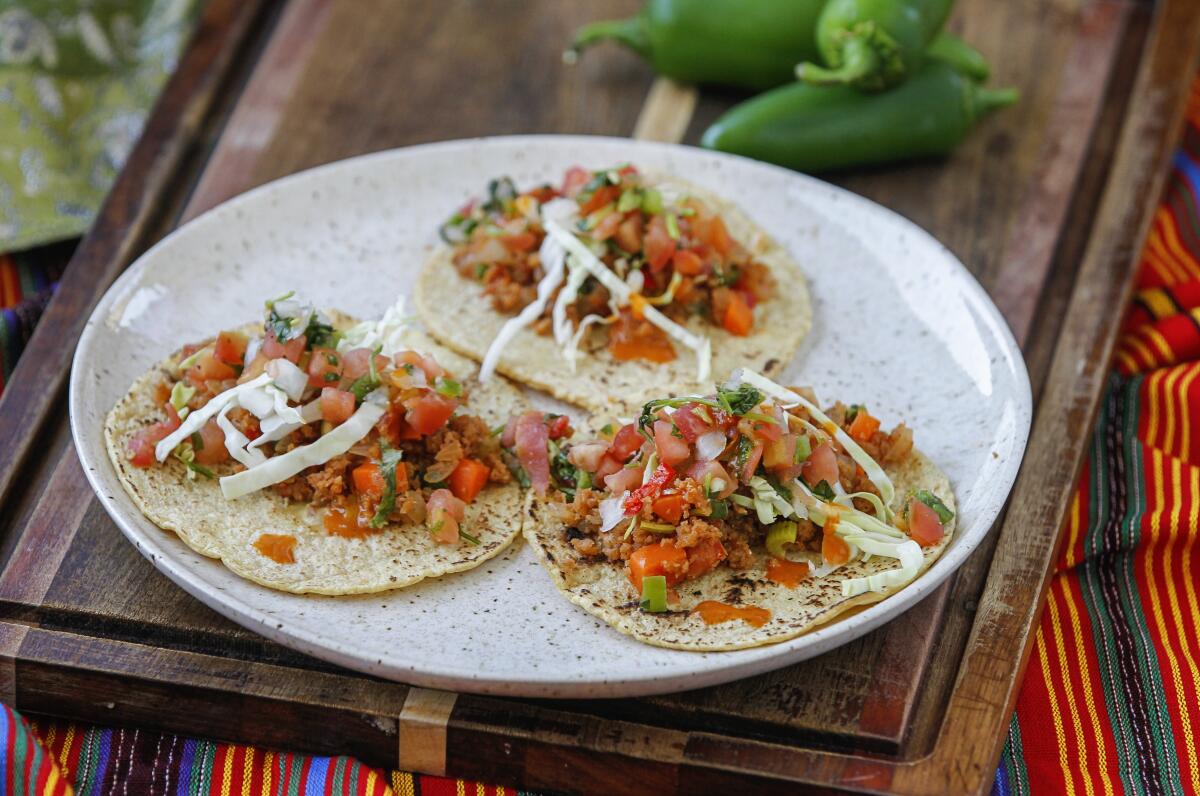
Ground Yellowtail Tacos
Makes 4-6 servings (10 tacos)
2 tablespoons grapeseed or other neutral oil
1 pound ground Mexican yellowtail (or pretty much any fish or mix of fish you have on hand)
Kosher salt
1 onion, finely diced
1 celery stalk, finely diced
1 carrot, finely diced
1 Roma tomato, seeded and diced
1 jalapeño chile, diced
1 Fresno chile, diced
1 teaspoon ancho chile powder
1 teaspoon guajillo chile powder
1 teaspoon onion powder
1 teaspoon garlic powder
10 warm corn tortillas
FOR THE GARNISH:
¼ green cabbage head, shredded finely
Salsa de Bandera (see recipe)
Chiltepin Hot Sauce (see recipe)
Bring the oil up to temperature over high heat in a large sauté pan. Add the ground fish and season with salt. Cook the fish until the pinkish, raw color is almost gone. Add in the onion, celery and carrot. Reduce the heat to medium and continue cooking until the onions are translucent, about 2 minutes. Add in the tomatoes and chiles and season with the chile powders, onion and garlic powders and another tablespoon of salt. Cook until the vegetables have given up their water and the seasoning has recombined.
Assemble the tacos by laying 2 tablespoons of the fish mixture on each tortilla, top with a tablespoon of the Salsa de Bandera and a sprinkling of cabbage and drizzle each taco with Chiltepin Hot Sauce.

Bacon Poached Shrimp Tacos With Chipotle-Avocado Sauce and Pink Pickled Onions
Makes 2 servings (4 tacos)
2 pounds bacon sliced thinly widthwise (not lengthwise)
12 medium-size shrimp, peeled and deveined
4 warm corn tortillas
½ cup Chipotle-Avocado Sauce (see recipe)
12 attractive cilantro leaves with about ¼ inch of stem each
16-20 Pink Pickled Onion slices (see recipe)
Maldon salt (or other flaky finishing salt)
Chiltepin Hot Sauce (see recipe)
Render the bacon fat by heating a large skillet over medium-low heat and, working in batches, add the bacon to the pan. Cook the bacon until the fat is rendered and the bacon is golden and crispy, about 8 to 10 minutes per batch. After each batch, drain off the bacon fat and strain through a fine-mesh sieve into a saucepan just large enough to hold the shrimp. Reserve the bacon for use as the optional garnish.
Heat the saucepan with the bacon fat over medium heat and add the shrimp to the fat. Poach the shrimp until they are pink and just cooked through, about 5 minutes. When they are cool enough to handle, build the tacos by spreading 1 to 2 tablespoons of the Chipotle-Avocado Sauce on each tortilla. Top the sauce with 3 bacon poached shrimp, 3-5 pickled onion slices, 3 cilantro leaves and finish with a sprinkle of Maldon salt. Garnish, if desired, with the bacon bits and Chiltepin Hot Sauce.
Chipotle-Avocado Sauce
Makes ½ cup
1 avocado, halved, pitted and peeled
1 chipotle chile from canned chipotles in adobo, minced
2 tablespoons adobo sauce, from the same can
1 ½ tablespoons extra virgin olive oil
½ key lime, juiced
Kosher salt
In a small bowl, mash the avocado. Add the mashed avocado to the bowl of a food processor and combine with the remaining ingredients. Process to a smooth purée. Taste the sauce and adjust the seasoning with salt or additional lime juice as necessary.
Gardiner is a freelance food writer whose first cookbook is due out this year. He lives in La Mesa.
Get Essential San Diego, weekday mornings
Get top headlines from the Union-Tribune in your inbox weekday mornings, including top news, local, sports, business, entertainment and opinion.
You may occasionally receive promotional content from the San Diego Union-Tribune.

